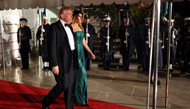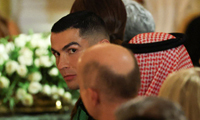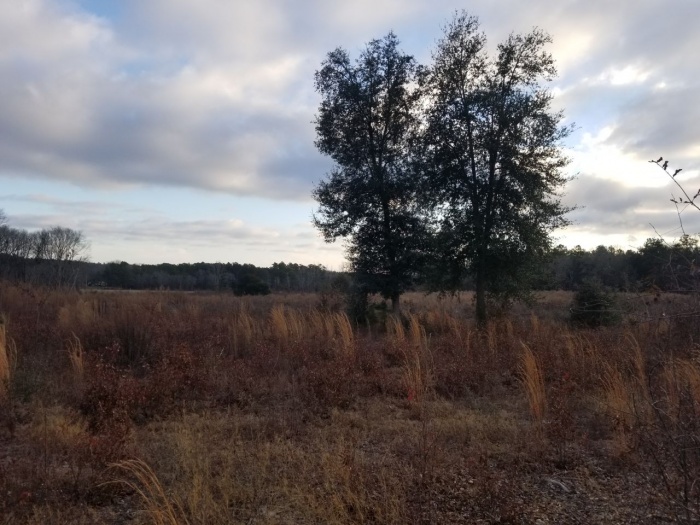That’s, in part, because we’ve moved from simplicity to ambiguity. The civil rights struggle was about as clear a conflict between right and wrong as we get in national life. The debate about Ferguson elicited complex reactions among most sensible people.
This complexity was best expressed in the short essay that Benjamin Watson, a New Orleans Saints tight end, posted on Facebook, which went viral. Watson listed 12 different emotions the Ferguson mess aroused, including:
“I’m ANGRY because stories of injustice that have been passed down for generations seem to be continuing before our very eyes. ... I’m OFFENDED because of the insulting comments I’ve seen. ... I’m INTROSPECTIVE because sometimes I want to take ‘our’ side without looking at the facts in situations like these.”
But the other reason that the civil-rights era comparisons were inapt is because the nature of racism has changed. There has been a migration away from prejudice based on genetics to prejudice based on class.
Let me explain with a historical detour. In 18th- and 19th-century Britain, there was a division between “respectable” society and those who lived in slums that were sometimes known as rookeries (because the neighborhoods reminded people of rock faces where thieving crows lived in little nooks and crannies).
The people who lived in these slums were often described as more like animals than human beings. For example, in an 1889 essay in The Palace Journal, Arthur Morrison described, “Dark, silent, uneasy shadows passing and crossing . human vermin in this reeking sink, like goblin exhalations from all that is noxious around. Women with sunken, black-rimmed eyes, whose pallid faces appear and vanish by the light of an occasional gas lamp, and look so like ill-covered skulls that we start at their stare.”
“Proper” people of that era had both a disgust and fascination for those who lived in these untouchable realms. They went slumming into the poor neighborhoods, a sort of poverty tourism that is the equivalent of today’s reality TV or the brawlers that appear on “The Jerry Springer Show.”Today we once again have a sharp social divide between people who live in the “respectable” meritocracy and those who live beyond it. In one world almost everybody you meet has at least been to college, and people have very little contact with features that are sometimes a part of the other world: prison, meth, payday loans, a flowering of nonmarriage family forms. In one world, people assume they can control their destinies. In the other, some people embrace the now common motto: “It don’t make no difference.”
Widening class distances produce class prejudice, classism. This is a prejudice based on visceral attitudes about competence. People in the “respectable” class have meritocratic virtues: executive function, grit, a capacity for delayed gratification. The view about those in the untouchable world is that they are short on these things. They are disorganized. They are violent and scary. This belief has some grains of truth because of childhood trauma, the stress of poverty and other things. But this view metastasizes into a vicious, intellectually lazy stereotype. Before long, animalistic imagery is used to describe these human beings.
This class prejudice is applied to both the white and black poor, whose demographic traits are converging. But classism combines with latent and historic racism to create a particularly malicious brew. People are now assigned a whole range of supposedly underclass traits based on a single glimpse at skin color.
During the civil-rights era there was always a debate about what was a civil-rights issue and what was an economic or social issue. Now that distinction has been obliterated. Every civil-rights issue is also an economic and social issue. Classism intertwines with racism.
It’s often said after events like Ferguson that we need a national conversation on race. That’s a bit true. We all need to improve our capacity for sympathetic understanding, our capacity to imaginatively place ourselves in the minds of other people with experiences different from our own. Conversation can help, though I suspect novels, works of art and books like Claude Brown’s “Manchild in the Promised Land” work better.
But, ultimately, we don’t need a common conversation; we need a common project. If the nation works together to improve social mobility for the poor of all races, through projects like President Obama’s My Brother’s Keeper initiative, then social distance will decline, classism will decline and racial prejudice will obliquely decline as well.
In a friendship, people don’t sit around talking about their friendship. They do things together. Through common endeavor people overcome difference to become friends.
스마터리빙
more [ 건강]
[ 건강]이제 혈관 건강도 챙기자!
[현대해운]우리 눈에 보이지 않기 때문에 혈관 건강을 챙기는 것은 결코 쉽지 않은데요. 여러분은 혈관 건강을 유지하기 위해 어떤 노력을 하시나요?
 [ 건강]
[ 건강]내 몸이 건강해지는 과일궁합
 [ 라이프]
[ 라이프]벌레야 물럿거라! 천연 해충제 만들기
 [ 건강]
[ 건강]혈압 낮추는데 좋은 식품
[현대해운]혈관 건강은 주로 노화가 진행되면서 지켜야 할 문제라고 인식되어 왔습니다. 최근 생활 패턴과 식생활의 변화로 혈관의 노화 진행이 빨라지고
사람·사람들
more많이 본 기사
- 트럼프, 조지아 단속에 “난 바보같이 그렇게 하지 말라고했다”
- 아이폰 있으면 국내선 여권 불필요 1
- 호날두 직접 만난 美 대통령 “아들 앞에서 체면 살아” 농담... 일론 머스크·빈 살만과 함께 ‘백악관 만찬’
- “미·러 새 종전안, 우크라 영토양보… 1
- [건강포커스] “중·노년기 신체활동량 늘리면 치매 위험 40% 이상 감소”
- 빈살만 극진환대 트럼프…영부인 만찬 … 1
- 메디케이드·식량·주거 보조 이용… 영… 3
- 나경원 등 ‘패스트트랙 충돌’ 오늘 1심 선고…발생 6년7개월만
- 트럼프 “내전중인 수단 안정화시킬것…지구상 가장 폭력적 장소”
- ‘엡스타인 파일 연루’ 서머스 전 재무, 오픈AI 이사직 사임
- “美 반도체 관세 미뤄질듯…미중갈등·물가상승 우려 감안”
- 실적낸 여성 뉴욕경찰수장, ‘진보’ … 1
- 머스크, 백악관 만찬 참석…트럼프 관계회복 본격화되나
- 중간 가구 연소득, 메릴랜드 2위·버지니아 8위
- 워싱턴북한선교회, 통일선교연합기도회
- 빅테크도 사우디 투자…xAI·엔비디아, 500㎿ 데이터센터 건설
- “무너진 캘리포니아 재건하겠다” 3
- 젠슨황과 돈독해진 트럼프, 엔비디아 AI칩을 외교 카드로 활용
- 中, ‘日수산물 수입 중단’ 추가 보복… “다카이치, 中공분 야기”
- 타일러, ‘스타벅스’ 해프닝 언급→ 마케팅 제안 “내 이름 샌드위치 만들길”[라스]
- 현빈♥손예진, 최초 부부 동반 남녀주연상..트로피 4개 집으로 [청룡영화상]
- 북VA 불법 마사지업소 260곳 넘는다
- “동양인 비하 제스처, 인종차별 맞다… 1
- 신안 해상서 267명 탄 여객선 좌초…3시간여만에 승객 모두 구조
- 검찰 물갈이, 중앙지검장 박철우·반부패 주민철… “안정·쇄신”
- 트럼프, 우크라전 종식 시도 재시동… “러와 28개항 비밀논의”
- 유엔위원회, 北인권결의안 만장일치 채택…韓도 공동제안국 참여
- 메디케이드 받으면 영주권 신청 거부된다
- 뉴욕증시, 엔비디아 실적 앞두고 변동성…동반 강세 마감
- “이스라엘, 시리아 철군 요청 거부…안보협상 교착”
- 韓 사상 첫 ‘월드컵 포트2’ 확정, 문제는 ‘포트2답지 못한’ 홍명보호 경기력
- JYP의 자부심..스트레이 키즈, 美 폴스타가 뽑은 콘서트 티켓 흥행 수익 2위
- 尹, 취임 반년 뒤부터 ‘비상대권’ 언급…임기내내 계엄 노렸다
- ‘양평 특혜’ 김건희 오빠 구속영장 기각…법원 “혐의 소명 안돼”
- 李대통령, 2박 3일 UAE 국빈 일… 1
- 아이폰 있으면 국내선 여권 불필요
- 손흥민, ‘임신 협박 3억 갈취’ 20대女 재판에 ‘증인 출석’... 50분간 비공개 신문
- 美·英·호주, ‘사이버범죄 지원’ 러시아 개인·단체 공동제재
- 이이경, ‘AI 사생활 피해’ 실체 밝힐까..결국 “강력 대응” 돌입
- 8월 무역 적자 596억 달러…전월 대비 24% 줄어
- 한인 대형교회 전도사 113만불 횡령… 1
- VA 주지사 인수인계 ‘삐걱’…UVA 총장 선임 ‘격돌’
- 푸드스탬프 수혜자 재신청 절차 요구할 것
- 한인타운 올림픽·버몬트 총격 사건 1
- BTS 정국도 샤라웃한 올데프 ‘원모어타임’, 해외 차트 상위권 장악
- [경제 트렌드] “거스름 줄 동전이 없어”… 1센트 폐지 혼란
- 사라진 백악관의 이스트 윙
- “소득대비 과도 공제… IRS 감사타겟 될 수도”
- 맥도널드, 연말 인기메뉴 ‘맥립’ 출시
- 푸드스탬프 재신청 의무화 추진 300여만명 식비지원 상실 위기
1/5지식톡

-
 테슬라 자동차 시트커버 장착
0
테슬라 자동차 시트커버 장착
0테슬라 시트커버, 사놓고 아직 못 씌우셨죠?장착이 생각보다 쉽지 않습니다.20년 경력 전문가에게 맡기세요 — 깔끔하고 딱 맞게 장착해드립니다!장착비용:앞좌석: $40뒷좌석: $60앞·뒷좌석 …
-
 식당용 부탄가스
0
식당용 부탄가스
0식당용 부탄가스 홀세일 합니다 로스앤젤레스 다운타운 픽업 가능 안녕 하세요?강아지 & 고양이 모든 애완동물 / 반려동물 식품 & 모든 애완동물/반려동물 관련 제품들 전문적으로 홀세일/취급하는 회사 입니다 100% …
-
 ACSL 국제 컴퓨터 과학 대회, …
0
ACSL 국제 컴퓨터 과학 대회, …
0웹사이트 : www.eduspot.co.kr 카카오톡 상담하기 : https://pf.kakao.com/_BEQWxb블로그 : https://blog.naver.com/eduspotmain안녕하세요, 에듀스팟입니다…
-
 바디프렌드 안마의자 창고 리퍼브 세…
0
바디프렌드 안마의자 창고 리퍼브 세…
0거의 새제품급 리퍼브 안마의자 대방출 한다고 합니다!8월 23일(토)…24일(일) 단 이틀!특가 판매가Famille: $500 ~ $1,000Falcon: $1,500 ~ $2,500픽업 & 배송직접 픽업 가능LA…
-
 바디프렌드 안마의자 창고 리퍼브 세…
0
바디프렌드 안마의자 창고 리퍼브 세…
0거의 새제품급 리퍼브 안마의자 대방출 한다고 합니다!8월 23일(토)…24일(일) 단 이틀!특가 판매가Famille: $500 ~ $1,000Falcon: $1,500 ~ $2,500픽업 & 배송직접 픽업 가능LA…
케이타운 1번가
오피니언
 정숙희 논설위원
정숙희 논설위원사라진 백악관의 이스트 윙
 파리드 자카리아 워싱턴포스트 칼럼니스트 / CNN ‘GPS’ 호스트
파리드 자카리아 워싱턴포스트 칼럼니스트 / CNN ‘GPS’ 호스트 계속되는 민주당의 헛손질
 김동찬 시민참여센터 대표
김동찬 시민참여센터 대표 [미국은 지금] 미국 정치의 파산과 그 댓가
 성영라 수필가 미주문협 부이사장
성영라 수필가 미주문협 부이사장 [수요 에세이] 부석사, 배흘림기둥에 기대어 보다
 서정명 / 서울경제 논설위원
서정명 / 서울경제 논설위원[만화경] ‘국부론’과 “기업이 곧 국력”
 노세희 부국장대우·사회부장
노세희 부국장대우·사회부장 대한은 다시 살아나는가
 민경훈 논설위원
민경훈 논설위원사자와 생쥐, 그리고 인간 이야기
 한형석 사회부 부장대우
한형석 사회부 부장대우 한인타운 교통 인프라 개선 기대
 박영실 시인·수필가
박영실 시인·수필가 [화요칼럼] 말의 위력
1/3지사별 뉴스

22기 뉴욕평통 출범식⋯“힘찬 출발”
22기 민주평화통일자문회의 뉴욕협의회(회장 이시화)는 17일 퀸즈 플러싱 소재 코리아빌리지 디모스 연회장에서 자문위원 173명을 비롯한 한인사…
메디케이드 받으면 영주권 신청 거부된다

VA 주지사 인수인계 ‘삐걱’…UVA 총장 선임 ‘격돌’
버지니아 글렌 영킨(Glenn Youngkin, 공화, 사진 왼쪽) 주지사와 내년 1월 취임하는 아비가일 스팬버거(Abigail Spanber…
북VA 불법 마사지업소 260곳 넘는다

사우디 빈살만 “1조달러 투자”…7년만의 방미환대 트럼프에 선물
사우디아라비아가 18일 대미 투자액을 기존에 발표했던 6천억 달러(약 876조원)에서 1조 달러(약 1천460조원) 규모로 상향 조정하기로 했…
방한후 美입국했다 석연찮게 구금된 한인과학자, 4개월만에 석방

오늘 하루 이 창 열지 않음 닫기 





















































.png)


댓글 안에 당신의 성숙함도 담아 주세요.
'오늘의 한마디'는 기사에 대하여 자신의 생각을 말하고 남의 생각을 들으며 서로 다양한 의견을 나누는 공간입니다. 그러나 간혹 불건전한 내용을 올리시는 분들이 계셔서 건전한 인터넷문화 정착을 위해 아래와 같은 운영원칙을 적용합니다.
자체 모니터링을 통해 아래에 해당하는 내용이 포함된 댓글이 발견되면 예고없이 삭제 조치를 하겠습니다.
불건전한 댓글을 올리거나, 이름에 비속어 및 상대방의 불쾌감을 주는 단어를 사용, 유명인 또는 특정 일반인을 사칭하는 경우 이용에 대한 차단 제재를 받을 수 있습니다. 차단될 경우, 일주일간 댓글을 달수 없게 됩니다.
명예훼손, 개인정보 유출, 욕설 등 법률에 위반되는 댓글은 관계 법령에 의거 민형사상 처벌을 받을 수 있으니 이용에 주의를 부탁드립니다.
Close
x